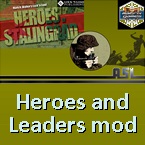asl3d
Posts: 6531
Joined: 2/6/2017
Status: offline

|
Japanese weapons manufacture
The extent of Japan's folly in going to war with the USA (even allowing for the latter's preoccupation with helping to defeat Hitler first) can be gauged by the fact that in 1944 Japan produced but a fraction of the armaments that America, let alone the entire alliance, manufactured, achieving just 4% of US mortar output, 6.5% of her small arms munitions, 8% of AA ammunition and 4.7% of her tank production. When Japanese weapons manufacture peaked earlier in the war, it barely equalled 10% of American output. Even in peace-time, Japan was self-sufficient only in sulphur, copper, zinc and mica, and depended on imports of everything else (including oil and most of her food). Thanks to the Allied war of attrition against Japanese merchant shipping (for which most credit must go to US submarines), by 1945 her industry was grinding to a halt for want of raw materials, most of the armaments that were produced were either stranded in Japan or littering the ocean floor, and the national diet was well below subsistence level. It is ironic that, whereas US destroyer captains escorting Allied convoys in the Mediterranean during the Great War sometimes committed seppuku after "losing" merchantmen to U-boat attacks, for most of the 1941-45 war few naval officers showed serious inclination to play "Mother Hen" to vital and vulnerable cargo ships, preferring instead to try to refight the battle of Tsushima with aircraft carriers. In-fighting between the Imperial Japan Army and Imperial Japan Navy hardly helped matters, and violent arguments over the allocation of Japan's inadequate and steadily shrinking shipping resources even led to fist-fights among the top brass! In desperation, the Imperial Japan Army was forced to build and man its own small supply submarines with no help whatsoever from the Imperial Japan Navy, an appalling waste of scarce resources. These blunders were compounded by the fact that Japan mobilized less than 10% of the civilian scientists available to the Allies and, like the Germans, wasted their talents through poor coordination and unnecessary duplication of effort. The net result was that, while each GI in the PTO was supported by an average of four tons of equipment, each Japanese soldier had just two pounds available. Even in the Bataan campaign, Japanese aircraft bombs were sometimes improvised from iron pipe with fillings of scrap farm machinery, clocks or automobile parts--and even rocks or cans were sometimes dropped instead of bombs. Thus, while Japan mobilized more infantry divisions than the USA, the declining quality of available personnel was aggravated by the growing inability of her industries to equip, clothe, feed and supply them; behind the veneer of numbers stood an increasingly ramshackle war machine.

 Attachment (1) Attachment (1)
< Message edited by asl3d -- 8/25/2020 6:20:48 PM >
_____________________________
Semper fidelis
|
 Printable Version
Printable Version





































 New Messages
New Messages No New Messages
No New Messages Hot Topic w/ New Messages
Hot Topic w/ New Messages Hot Topic w/o New Messages
Hot Topic w/o New Messages Locked w/ New Messages
Locked w/ New Messages Locked w/o New Messages
Locked w/o New Messages Post New Thread
Post New Thread